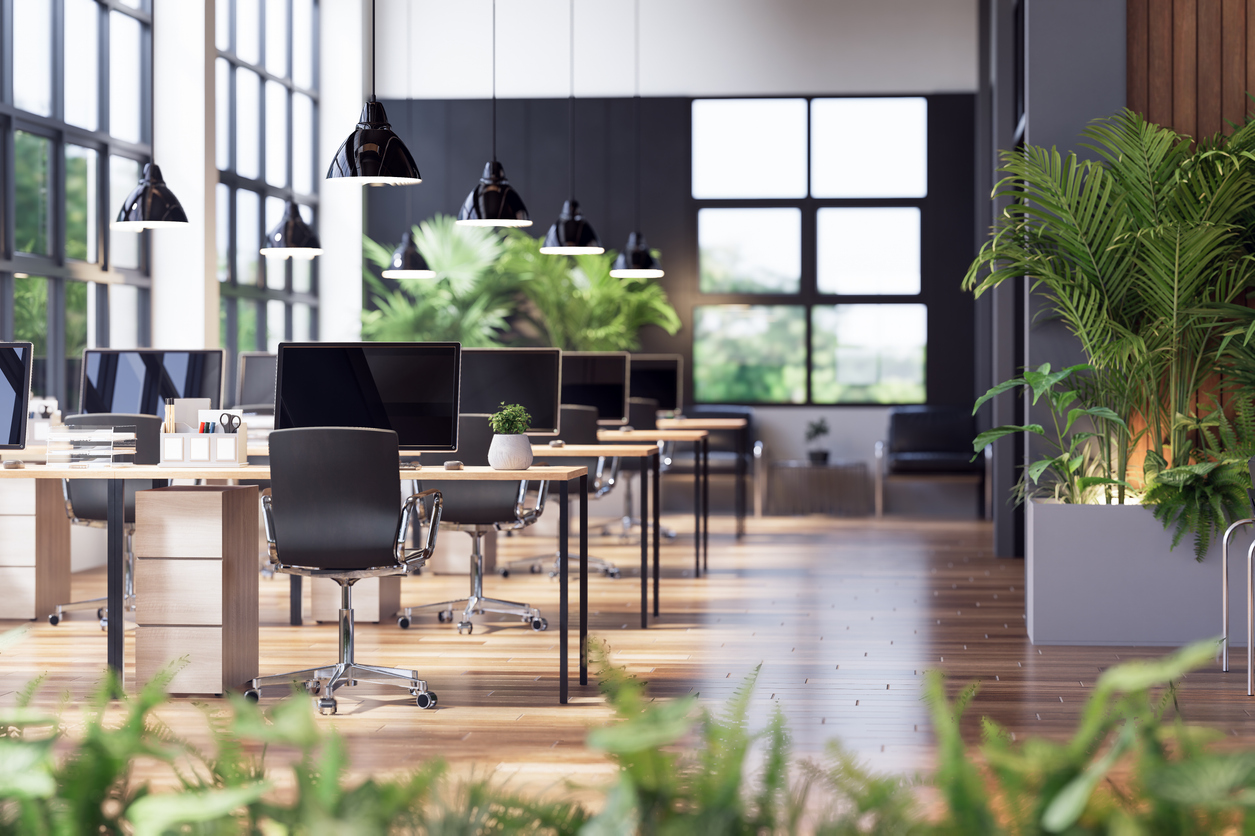Home is no longer just a place to rest for today's top executives—it is a strategic asset for sustaining peak performance. Leaders are reworking their living spaces into sanctuaries that reduce stress and boost cognitive function in a world of constant connectivity and high pressure. According to Deloitte's 2023 State of the Workplace report, 85% of executives say they intend to take greater responsibility for workforce well-being over the next one to two years, highlighting a growing recognition of how factors like the home environment can impact work-related stress.
This shift is not about luxury but intentional design choices that deliver a measurable return on well-being and decision-making clarity. Here are the top design decisions that high-performing leaders are implementing to create truly stress-proof homes.
1. Incorporate Biophilic Design Principles
Top executives are bringing the outdoors in by integrating biophilic design—an evidence-based approach that connects occupants with nature. This is more than adding a few potted plants; it creates an immersive atmosphere that lowers stress and raises creativity. According to National Center for Biotechnology Information research, interacting with natural elements can significantly reduce cortisol levels. Key actions include:
- Living Green Walls – Installing large-scale plant installations serves as a natural air purifier and calming visual focal point.
- Natural Materials – Using wood, stone, and bamboo for furniture, flooring, and finishes to establish a tactile tie with nature.
- Maximized Natural Light – Designing with large, unobstructed windows to maintain the connection with the outdoors and support natural body rhythms.
2. Establish Dedicated Technology-Free Zones
To fight the threat of digital burnout, leaders are creating analog zones—spaces completely free of screens. This method encourages mental disconnection, leading to deep rest and better sleep quality. The Sleep Foundation highlights that blue light disrupts melatonin production, so a technology-free sanctuary is an effective countermeasure. Leaders design these areas with:
- Purposeful Comfort – Using comfortable seating, physical books, and art to inspire activities like reading and quiet conversation.
- Acoustic Insulation – Installing acoustic panels or heavy drapery to keep distracting noise at bay.
- Firm Boundaries – Enforcing a strict no-device rule paired with a scheduled digital sunset one to two hours before bedtime.
3. Install Human-Centric Circadian Lighting
CEOs are investing in advanced smart lighting systems that align with the body's natural circadian rhythm. This technology helps improve energy levels during work hours and supports restfulness at night. Human-centric lighting (HCL) has positively influenced mood, cognitive performance, alertness, and overall well-being by helping the body's circadian rhythms and non-visual responses to light. By automating the home's lighting to mimic the sun's progression, executives create an environment optimized for focus and relaxation. Key implementation steps include:
- Tunable LED Systems – Installing lights that automatically change from cool, energizing tones in the morning to warm, relaxing hues in the evening.
- Layered Lighting – Combining ambient, task, and accent lighting to create varying moods throughout the day.
- Smart Home Integration – Connecting the lighting system to voice-controlled assistants for preset scenes like focus, entertain, or relax.
4. Engineer an Acoustic Sanctuary
Unwanted noise can be a hidden stressor that disrupts concentration and rest. Leaders are addressing this by adopting advanced acoustic strategies to transform their homes into quiet sanctuaries. Research published by the Acoustical Society of America indicates that controlled sound environments—such as sound enrichment or natural soundscapes—can help improve concentration and reduce anxiety. Key methods include:
- Sound-Absorbing Materials – Using acoustic wall panels, thick rugs, and heavy curtains to dampen noise and echoes.
- Professional Solutions – In urban settings, adding mass-loaded vinyl within walls or acoustic-grade windows to block distractions.
- Sound Masking – Using white-noise machines to create a consistent, calming auditory backdrop to cover sudden noises.
5. Design Integrated, Clutter-Free Storage
Visual clutter creates background stress and increases cognitive load. A well-organized space minimizes decision fatigue by making items easy to manage. Selecting media furniture for features like entertainment units Sydney that offer superior cable management is key for living areas. Crafting solutions that hide wires and devices—turning a cluttered zone into a minimalist focal point—is an essential aspect of integrated storage design. Executives create spacious, orderly, and mentally restorative spaces with custom cabinetry and thoughtful furniture design.
Design Decisions Summary
| Decision | Key Features |
|---|---|
| Biophilic Design | Living green walls, natural materials, and maximized natural light |
| Technology-Free Zones | Purposeful comfort, acoustic insulation, firm boundaries |
| Circadian Lighting | Tunable LED systems, layered lighting, and smart home integration |
| Acoustic Sanctuary | Sound-absorbing materials, professional solutions, and sound masking |
| Clutter-Free Storage | Integrated storage solutions, media furniture, and custom cabinetry |
The Future of Executive Living: Where Design Meets Performance
As the boundaries between work and home continue to blur, CEOs no longer leave their well-being to chance. These five design decisions represent a deliberate shift toward environments that reduce stress and actively enhance focus, recovery, and cognitive clarity. By turning their homes into high-performance sanctuaries, today's leaders are setting a new standard—not just for luxury living, but for intentional, health-centered design that supports long-term personal and professional sustainability.














